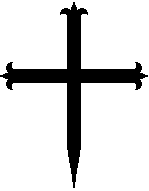Main Page: Difference between revisions
(New pages of the month) |
m (updated page of the month) |
||
| Line 35: | Line 35: | ||
</tr> |
</tr> |
||
<tr valign="top"><td style="background-color: #f8ffff; border: 2px solid #e2ffff; border-top: none; padding: 0.6em; padding-top: none;"> |
<tr valign="top"><td style="background-color: #f8ffff; border: 2px solid #e2ffff; border-top: none; padding: 0.6em; padding-top: none;"> |
||
'''[[Science and Technology in the Renaissance]]''': Science and Technology in the Renaissance was focused around the major sciences of [[astrology]] and [[geometry]], as well as [[medicine]], [[magic]] and [[alchemy]]. Although [[astronomy]] was a major emerging science, it did not truly come into its own until after the end of the [[16th century]]. Until [http://www.wikipedia.org/wiki/Johannes_Kepler Johannes Kepler], [[astronomy]] was a science that was studied purely to enable better understanding of [[astrology]]. <small> ... [[Science and Technology in the Renaissance|[more]]]</small> |
|||
'''[[Old English]]''': Old English is an early form of the English language that was spoken in England around 1000 years ago. It is sometimes called Anglo-Saxon as it was mainly derived from the tongue of the Saxons. The language spoken in England is considered Old English 450 AD until some time after the Norman invasion of England (around 1066 AD), when it becomes Middle English. Most Old English texts are now transliterated rather than being produced in period typefaces. <small> ... [[Old English|[more]]]</small> |
|||
</td> |
</td> |
||
<td></td> |
<td></td> |
||
<td style="background: #fff3ff; border: 2px solid #ffddff; border-top: none; padding: 0.6em; padding-top: none;"> |
<td style="background: #fff3ff; border: 2px solid #ffddff; border-top: none; padding: 0.6em; padding-top: none;"> |
||
[[Image: |
[[Image:crossfitchy.PNG|right]] |
||
'''Heraldic jargon: ''': In [[heraldry]], a [[ |
'''Heraldic jargon: ''': In [[heraldry]], a '''[[cross fitchy]]''' is any [[cross]] whose lower point has been converted into a long point. The term "fitchy" derives from the [[French]] for fixed, and indicates a cross that would be stuck into the ground. |
||
'''Dance:''' [[ |
'''Dance:''' [[Quatre branles]] |
||
'''Fibre arts:''' [[ |
'''Fibre arts:''' [[weaving]] |
||
'''Recipe:''' [[ |
'''Recipe:''' [[Poume d'oranges (recipe)|Poume d'oranges]] |
||
<small>[[Cunnan:Page of the Month|More details on the Page of the Month.]]</small> |
<small>[[Cunnan:Page of the Month|More details on the Page of the Month.]]</small> |
||
Revision as of 10:33, 1 December 2005
Welcome to Cunnan, a Wiki collecting information for re-enactors of the Middle Ages and Renaissance with a heavy slant towards members of the SCA.
Cunnan is the largest SCA wiki in the world - anyone can edit our articles. You should be bold in updating pages! Articles can only be improved if people are contributing new information and improving old information. So add research information, how-to pages, event information and anything else you can think of. Cunnan should be applicable worldwide, so be mindful of regional differences - use comments such as "In Lochac...". If you see anything that is different in your area, add a note on your local variation.
| December 14: | Cunnan now has more than 4,205 articles! |
| October 9: | Cunnan's software has been upgraded. If anything is broken you should leave a note at the Village pump. |
| Page of the Month | Other Features | |
|---|---|---|
|
Science and Technology in the Renaissance: Science and Technology in the Renaissance was focused around the major sciences of astrology and geometry, as well as medicine, magic and alchemy. Although astronomy was a major emerging science, it did not truly come into its own until after the end of the 16th century. Until Johannes Kepler, astronomy was a science that was studied purely to enable better understanding of astrology. ... [more] |
Heraldic jargon: : In heraldry, a cross fitchy is any cross whose lower point has been converted into a long point. The term "fitchy" derives from the French for fixed, and indicates a cross that would be stuck into the ground. Dance: Quatre branles Fibre arts: weaving Recipe: Poume d'oranges |
